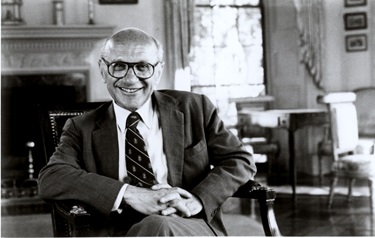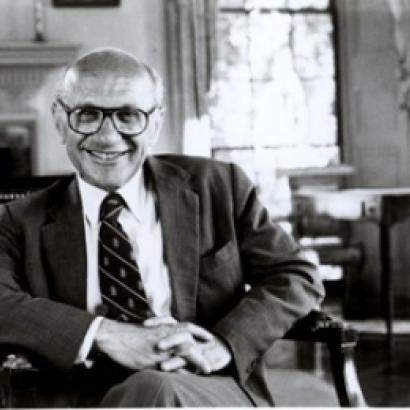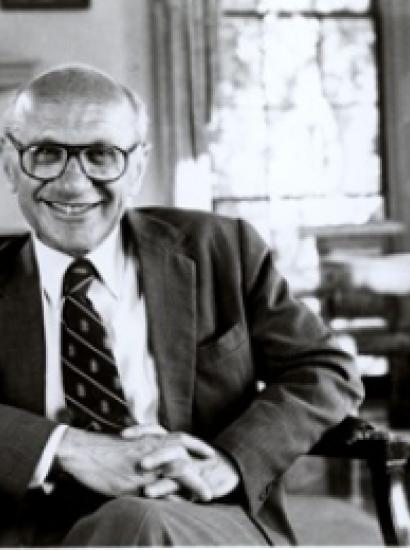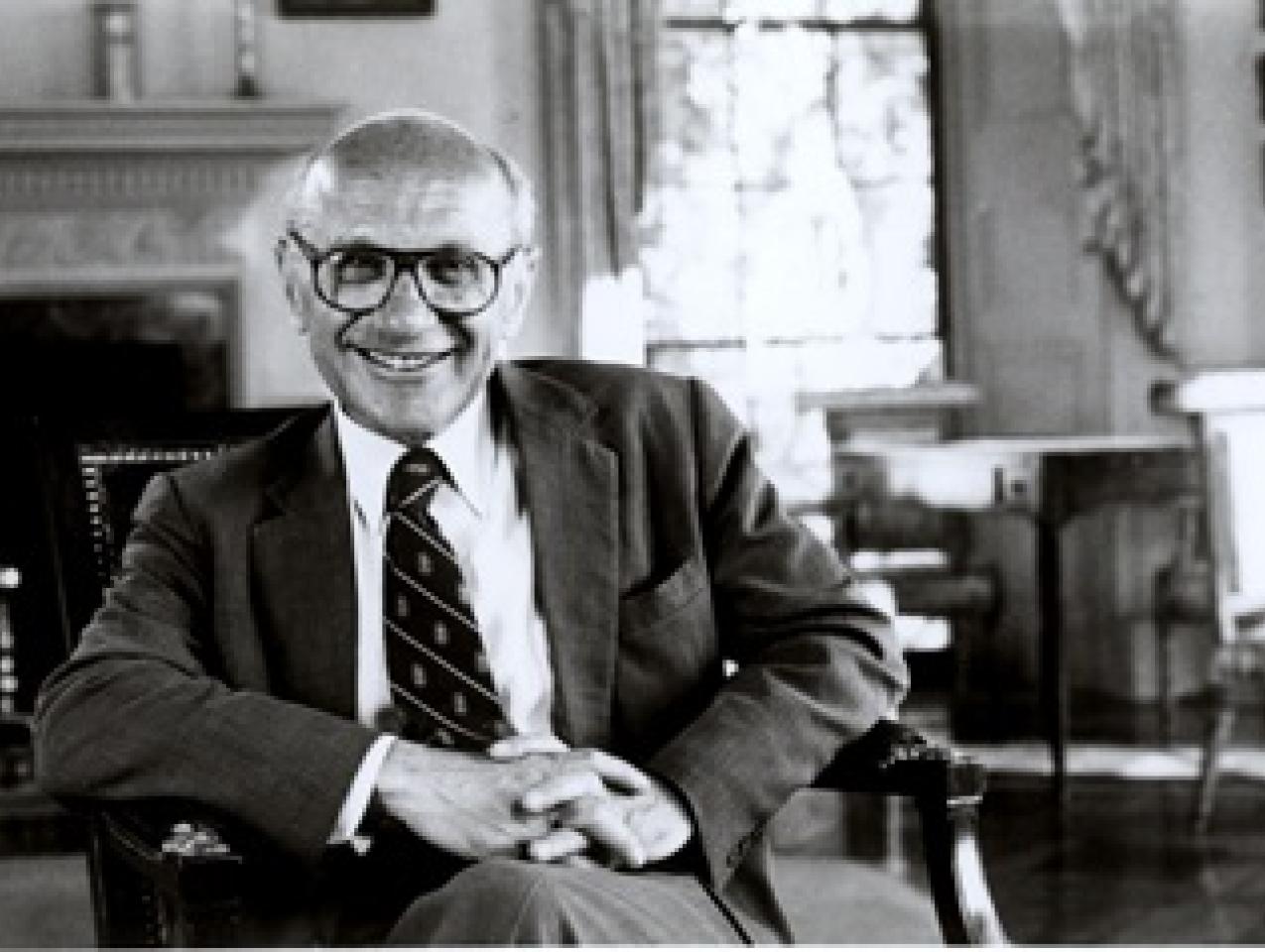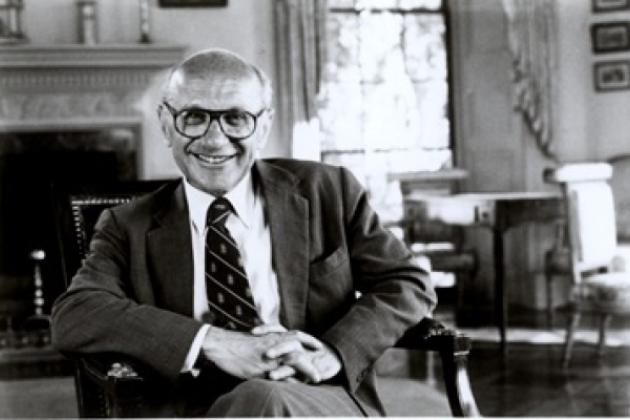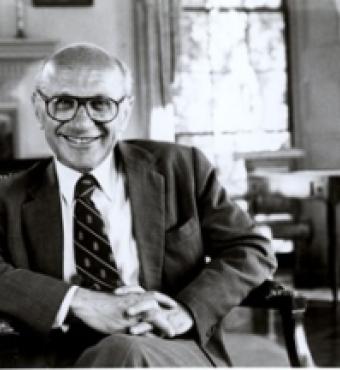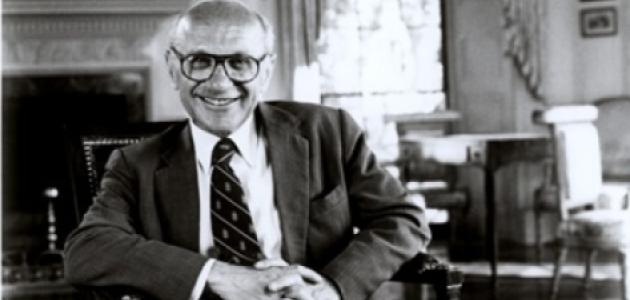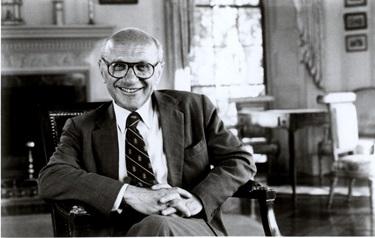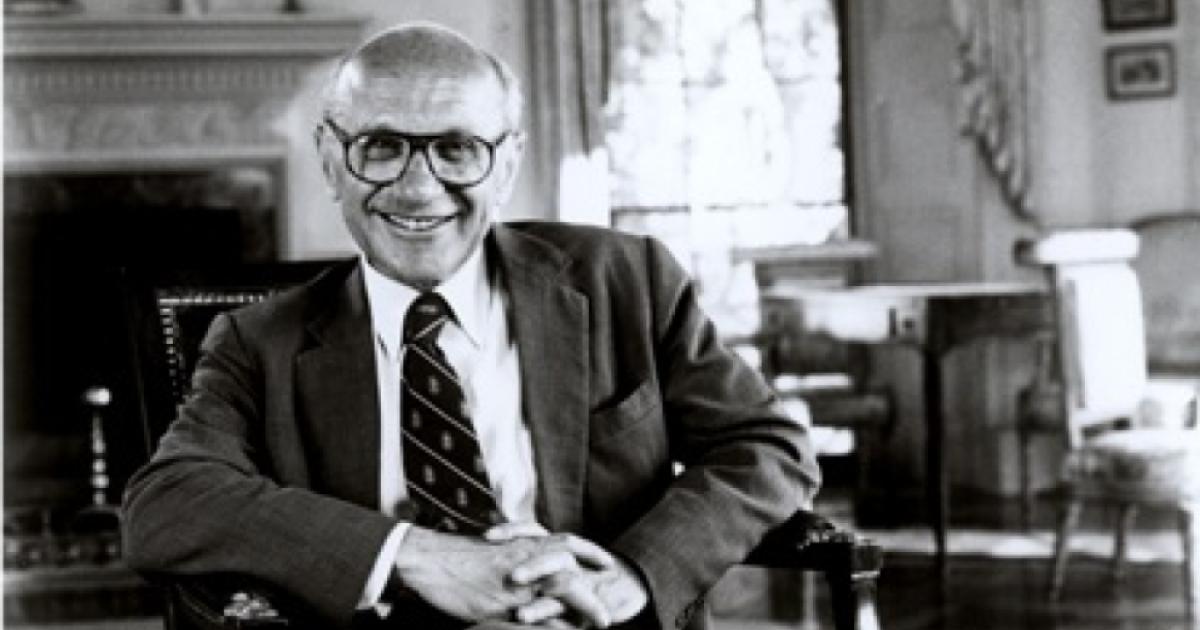In recent months, various critics of the late Milton Friedman have argued that Friedman dominated economic policy for a large part of the last half century. And yet they don’t typically mean that in a complimentary way. In an August 24 New York Times article, for example, editorial board member Binyamin Appelbaum writes that the “most important figure” in postwar economics was Milton Friedman, “an elfin libertarian who refused to take a job in Washington, but whose writings and exhortations seized the imagination of policymakers.” Tellingly, Appelbaum’s article is titled “Blame Economists for the Mess We’re In.” I have been a fan of Friedman since, at age 17, I read a 1968 column he wrote in Newsweek. I have read much of his academic work and nearly all of his popular writing. And I certainly think Friedman was the most important and influential economist of the last half the 20th century.
Friedman certainly had some major policy successes. Two stand out. The first was his role, from the late 1960s to the early 1970s, in helping end military conscription. The second was his and co-author Anna J. Schwartz’s revival of the idea that the growth rate of the money supply has an important effect on the inflation rate. I’ll review some of those accomplishments in more detail. But did Friedman dominate economic policy? If he had, we would be much better off. Unfortunately, he did not. And, contrary to the made-up stories about Friedman, the evolution of his thinking is much more interesting than some of his critics think. Early in his time in the economics profession, Friedman was, like the other young economists of his day, a Keynesian. But he was also an empiricist who carefully studied data. He was that rarest of human beings: a smart man who, well after age 30, changed his mind based on the evidence he studied.
Consider the first of the two areas in which Friedman really did have an effect, military conscription. People often mis-remember the 1960s and think that the anti-Vietnam War movement and the anti-draft movement had a large overlap. They did not. Participants at many anti-Vietnam War demonstrations did not even mention the draft. And even when the two overlapped, one had the impression that if the Vietnam war had not existed, there would have been little objection to the draft.
Friedman and a number of younger economists, by contrast, objected to the draft on philosophical and economic grounds. Here’s how Friedman put the philosophical argument at a December 1966 conference on the draft at the University of Chicago:
A voluntary army would preserve the freedom of individuals to serve or not to serve. Or, put the other way, it would avoid the arbitrary power that now resides in draft boards to decide how a young man shall spend several of the most important years of his life—let alone whether his life shall be risked in warfare.
Their objection on economic grounds was that the draft, far from being less costly than an all-volunteer force, was actually more costly. The draft let the military get away with paying less to first-termers, many of whom were draftees. This meant that the U.S. government hid the cost by putting it on the shoulders on the draftees, a cost that was not reckoned in any government accounts. And by drafting some of the military, the government had no way to distinguish between those who slightly wanted to avoid military service and those who badly wanted to avoid it. So some of the people it drafted had a high opportunity cost and in an all-volunteer environment would never have volunteered at even the higher all-volunteer wage. The draft raised costs, in other words, by putting “the wrong man in uniform.” Indeed, The Wrong Man in Uniform was the title of a 1967 book written by anti-draft author Bruce K. Chapman.
At that 1966 conference, Friedman illustrated the point with an example. He stated:
Consider, for example, the cost to a star professional football player and to an unemployed worker. Both might have the same attitudes toward the army and like—or dislike—a military career equally. But because the one has so much better alternatives than the other, it would take a much higher sum to attract him. When he is forced to serve, we are in effect imposing on him a tax in kind equal in value to the difference between what it would take to attract him and the military pay he actually receives.
Less than three years later, on March 27, 1969, newly elected President Nixon chose Friedman as one of the fifteen members of the President’s Commission on the All-Volunteer Force. And less than a year after that, on February 20, 1970, the Commission issued its report favoring the abolition of the draft. Even though five Commission members had been pro-draft, five had been anti-draft, and five had been on the fence, fourteen of the members favored abolition. The fifteenth, Roy Wilkins, executive director of the NAACP, wrote a separate letter to Nixon in which he said he had been too sick to participate in the last five of the Commission’s meetings but “would like to endorse the basic idea of moving towards an all-volunteer armed force.” Just over three years later, on June 30, 1973, the draft was gone. We can’t know all in the ins and outs of the Commission’s work, of course, but anyone who knew Milton Friedman knew how persuasive he could be. Certainly Friedman deserves much of the credit for the report’s intellectual case against the draft. Keep that in mind the next time you hear that Friedman is partly responsible, as Appelbaum claims, for the inequality of wealth and income in this country. One of the biggest contributors to artificially low income was the lousy pay that the U.S. government got away with paying conscripted soldiers.
You could say that getting rid of conscription was Milton Friedman’s hobby. Where he put most of his professional time between the late 1950s and the early 1960s was in researching his book A Monetary History of the United States, 1867-1960, co-authored with Anna J. Schwartz. In that book, the authors established something that broke with the pre-existing consensus about the causes of the Great Depression. They argued, with supporting data, that a 30 percent decline in the money supply between 1929 and 1933 was a major contributor to the Great Depression. By the early 1970s, their view had become the dominant one. They also found a fairly close relationship between growth in the money supply and inflation. That finding was what led Friedman to make one of his most famous comments about inflation: “Inflation is always and everywhere a monetary phenomenon.”
We take this connection for granted nowadays. But it wasn’t always so. In a 1969 column in Newsweek, when the dominant belief was the Keynesian view that money was impotent and fiscal policy was potent, MIT economist and soon to be Nobel Prize winner Paul Samuelson wrote:
[T]here is no sight in the world more awful than that of an old- time economist, foam-flecked at the mouth and hell-bent to cure inflation by monetary discipline. God willing, we shan’t soon see his like again.
Well, guess what? We did see his like again. By the mid-to-late 1970s, Friedman’s view about the importance of monetary policy in affecting short-run economic growth and the inflation rate had become dominant. In fact, Samuelson himself came to believe that monetary policy was potent. In my obituary of Samuelson in the Wall Street Journal, I traced the evolution of his views in his famous textbook, Economics. By the 1985 edition, Samuelson and co-author William Nordhaus wrote that money “is the most powerful tool and useful tool that macroeconomic policymakers have.”
So Milton Friedman was important and effective. But how effective? In a 26-page single space memo written in 2018 and titled “Beyond Neoliberalism: Rethinking Political Economy,” Larry Kramer, president of the Hewlett Foundation and former dean of the Stanford Law School, blames or credits Friedman for pretty much all of economic policy over the last half-century. Kramer refers to “neoliberalism” as “today’s prevailing intellectual paradigm.” What is neoliberalism? It’s the “free market orthodoxy.” And the person behind it is none other than Milton Friedman.
EconTalk host and Hoover economist Russ Roberts recently wrote an excellent article criticizing Kramer’s view. Roberts went through economic policy in the last 40 or 50 years in detail, showing that far from dominating economic policy, free-market, small-government views have increasingly lost out. This shows up, notes Roberts, in government spending at all levels as a fraction of GDP—it’s now 33 percent, compared to 30 percent in 1980; pages added annually to the Federal Register, which, until Trump, were rising steadily; past and future federal health care spending, which is rising quickly; and inflation-adjusted per-pupil government spending on K-12 schools, which has almost doubled since 1980. Friedman was on the losing side of these issues.
Kramer even imagines a 1945 conversation with the young (then age 33) Friedman and summarizes what he imagines to be the latter’s views. One is that “the measure of success for a nation consists of wealth, broadly understood to include whatever forms of utility its individual members value.” Where does Kramer get this? I’ve read almost every popular article Friedman has ever written and every line of his and Rose Friedman’s autobiography, Two Lucky People, and I don’t remember anything like that. Certainly a nation’s wealth is one important measure of success and I doubt that many economists would put a low weight on it. But it might surprise Kramer to know that Friedman cared deeply about income inequality also. Indeed, in a famous 1946 critique of rent control, Friedman and co-author George Stigler wrote that they “would like even more equality than there is at present, not alone for housing but for all products.”
That’s not all. Back in the 1940s, Friedman’s views on the macroeconomic issues of the day were evolving. In 1942, while a young official at the U.S. Treasury, he wrote a document that, in his autobiography, he refers to as “thoroughly Keynesian.” In the document, he advocated raising taxes to reduce overall demand and, thus, to reduce inflation. Writes Friedman in his autobiography, “I did not even mention ‘money’ or ‘monetary policy.’”
How and why did Friedman’s views on these big issues change? In my review of Two Lucky People, I commented that Friedman doesn’t answer that question. When I ran into him at a Hoover dinner a few months after my review was published, he told me that his views changed so slowly that there was no “Saul on the road to Damascus” conversion.
My guess is that what changed him was examining data. One of the building blocks of Keynesian economics was the so-called “consumption function,” whereby people consume a certain percent of their income. Wondering whether this made sense led Friedman to write one of his first books, A Theory of the Consumption Function, published in 1957, in which he showed that transitory increases in income do not lead to the increases in consumption spending that the Keynesian model assumed. This finding undercut the belief in Keynesian fiscal policy.
Let’s give credit to Friedman where credit is due. He was the most important economist of the last half of the 20th century. But did he dominate economic thinking, with his ideas “seizing the imagination of policy makers?” He did not. As the British say, more’s the pity.







